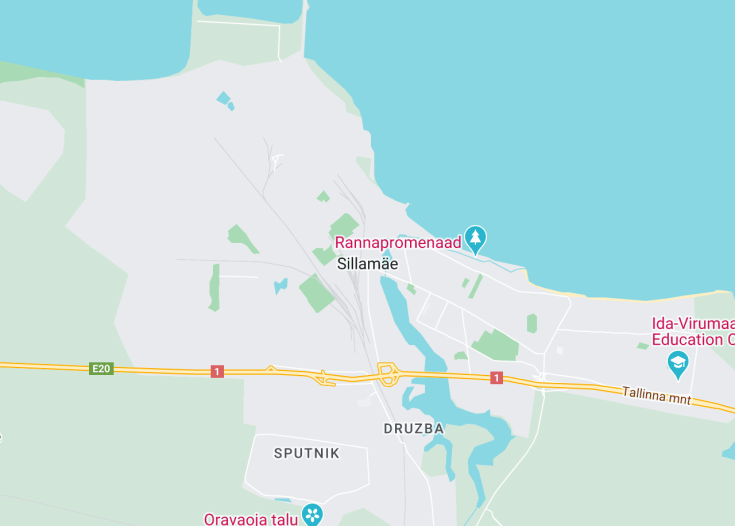Sillamäe, nestled along Estonia’s serene northeastern coastline, presents a unique blend of Soviet-era history intertwined with modern developments. This quaint city, with its striking Stalinist architecture, is a testament to its industrial past focused on uranium production for the Soviet nuclear program. Today, Sillamäe stands out for its beautifully restored waterfront and cultural sites, inviting visitors to explore its mysterious yet inviting ambiance. The city’s blend of historical significance and scenic landscapes makes it an intriguing destination for those interested in history, architecture, and nature.
When visiting Sillamäe, ensure to take a guided tour to fully appreciate the city’s historical context and architectural uniqueness.
Plan your visit during the summer months to enjoy Sillamäe’s coastal beauty and outdoor festivals, enhancing the cultural experience.
Top things to do & see in Sillamäe
Select the following sights and activities to discover best tickets and tours available in Sillamäe.
Sillamäe: The Time-Capsule of Estonian Industrial Heritage
| Country | Estonia |
| Time in Sillamäe | GMT+2 |
| Language spoken | Estonian |
| Population | 13,666 (Statistics Estonia, 2023) |
| Currency | Euro (€, EUR) |
| Airports |
|
Sillamäe, a small town located in the northeastern part of Estonia, stands as a unique testament to the country’s Soviet-era industrial past. With its well-preserved Stalinist architecture and a rich history tied to the uranium processing for the Soviet nuclear program, Sillamäe offers a distinctive glimpse into a bygone era. The town was a top-secret location during the Soviet era and was not marked on maps until Estonia’s independence in the early 1990s. Today, it attracts visitors not only for its historical significance but also for its beautiful location on the Gulf of Finland, enclosed by lush green landscapes. The recent revitalization efforts have preserved its historical structures, making Sillamäe a quaint yet intriguing destination for those interested in history and architecture. Apart from its past, Sillamäe is known for its peaceful seafront promenade and beaches, providing scenic views of the Baltic Sea. The port of Sillamäe, one of the deepest and most modern in Estonia, is pivotal for maritime trade and adds to the economic significance of the town. Local festivals and cultural events also offer deep insight into Estonian traditions and the unique heritage of this once secretive city. Sillamäe remains a symbol of time encapsulated, where history and modernity coexist harmoniously, inviting those who wish to experience the lingering presence of history while enjoying the tranquil beauty of Estonian nature.
Where is Sillamäe?
Situated at the northeastern edge of Estonia, Sillamäe boasts a coastal position by the Gulf of Finland.
Distances:
| Route | Distance by car | Time by car |
|---|---|---|
| Tallinn to Sillamäe | 167 mi | 2 hr 45 min |
| Tartu to Sillamäe | 133 mi | 2 hr 50 min |
| Narva to Sillamäe | 16 mi | 20 min |
What is Sillamäefamous for?
Sillamäe is famed for its Soviet-era architecture and historical significance in uranium processing. The city’s lush seafront and deep port add to its unique charm.
History
Pre-20th Century Beginnings
Sillamäe, situated on the northern coast of Estonia, traces its beginnings to ancient times when it was merely a site for fishing and trade due to its strategic location by the Gulf of Finland. Historically, it remained sparsely populated, primarily noted in historical texts as a natural harbor in the medieval period.
1940-1991: The Soviet Era
With the advent of the Second World War and subsequent Soviet influence, Sillamäe saw dramatic transformations. In 1946, the USSR established a secret uranium processing plant, marking the beginning of the town’s significance in the Soviet military-industrial complex. The town was closed to the public, heavily guarded and not marked on maps. The demographic was fundamentally altered with the influx of workers, primarily Russians, to facilitate the plant’s operations. This period defined much of the contemporary structure and layout of the city, with typical Soviet architecture and urban planning principles.
Post-1991: Modern Developments
Following Estonia’s independence in 1991, Sillamäe underwent significant changes. The once secretive city opened up, revealing its unique blend of picturesque landscapes and Soviet-era structures. Efforts have been made to revamp its economy and integrate it more deeply with the rest of Estonia and the broader European community. Environmental cleanup initiatives were also implemented to handle the legacy of its uranium processing past. In recent years, the town has been developing its potential in tourism and regional industry.
Visit Sillamäe
What to see and do in Sillamäe, Estonia
Explore Sillamäe’s unique charm through its well-preserved Soviet-era architecture, starting with the Town Hall and the Cultural Center, which are prime examples of Stalinist classicism. The city’s historical center, along with the beautiful promenade overlooking the Gulf of Finland, provides a scenic walking area. Pay a visit to the Sillamäe Museum of History and Culture to delve deeper into the city’s intriguing past.
- Stroll along the Mere puiestee Promenade
- Visit Sillamäe Beach for a relaxing day
- Explore local history at Sillamäe Museum
Festivities in Sillamäe
Sillamäe hosts a variety of cultural events, most notably the Sillamäe Cultural Summer, which includes concerts, exhibitions, and workshops from June to August. The Uranium Film Festival, an international event showcasing films about nuclear power and its impacts, also takes place here, attracting global attendees.
Best time to visit Sillamäe
The optimal time to visit Sillamäe is during the summer months from June to August when the weather is warm and the town’s cultural activities are at their peak, providing an enriching experience of local traditions and modern festivities.
Is Sillamäe worth visiting?
Sillamäe is undeniably worth visiting for those intrigued by history and architecture, particularly of the Soviet era. Its unique blend of historic significance due to its secretive past, coupled with the natural beauty of the Estonian coastal landscape, provides a compelling reason for a visit. The revitalization efforts in post-Soviet years have made it an accessible and educational destination with a peaceful charm.













